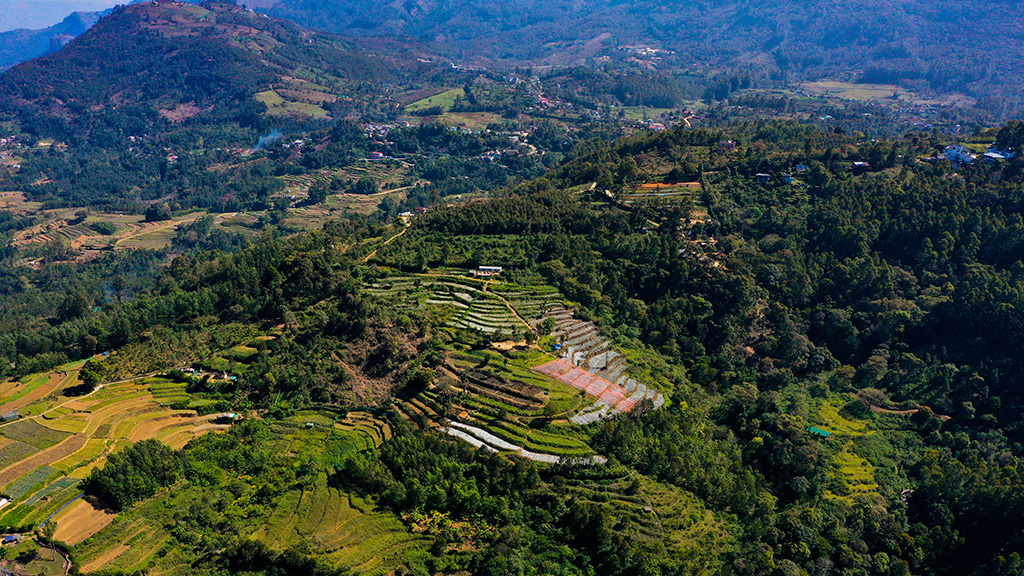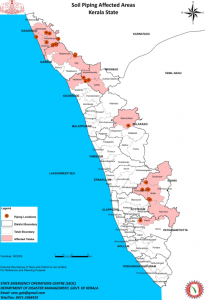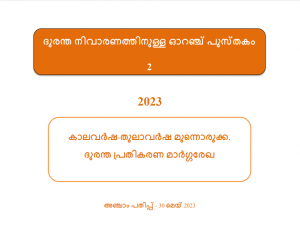Kerala's unique topography, with Western Ghats, coastal plains, and extensive river network, makes it vulnerable to monsoon-related disasters.
Published Jul 22, 2024 | 12:00 PM ⚊ Updated Jul 22, 2024 | 12:00 PM

An aerial view of kanathallur village nestled on top of Western Ghats in Idukki. Photo: Kerala Tourism.
Even as the southwest monsoon continues to batter various parts of Kerala, the state is bracing for potential disasters such as landslides, floods, and other rain-related incidents.
The continuous downpour has led to waterlogging in many low-lying areas, disrupting daily life and raising concerns about the state’s safety and preparedness.
Kerala’s unique topography, with Western Ghats, coastal plains, and extensive river network, makes it vulnerable to monsoon-related disasters.
In recent years, the state has experienced severe floods, most notably in 2018 and 2019, which resulted in significant loss of life and property.
One of the main disasters that heavy rainfall can cause is the flood. Overflowing rivers lead to widespread flooding in both urban and rural areas. Low-lying regions and areas near riverbanks are particularly susceptible.
Another is the landslides. The Western Ghats, which guard the state’s eastern boundary, are prone to landslides during heavy rains. These can result in significant damage to property and loss of life, especially in hilly regions.

landslide prone areas of Kerala
Next comes waterlogging as prolonged rainfall can lead to it in low-lying urban areas, disrupting daily life and causing damage to infrastructure.
Another disaster is coastal erosion as heavy rains and rough seas can accelerate coastal erosion, affecting coastal communities and infrastructure.
Persistent rains can also result in soil piping, infrastructure damage, agricultural losses, riverbank erosion, health issues, road accidents, power outrage and others.
According to an official of the India Meteorological Department-Kerala, “The state’s geography, combined with heavy monsoon rains, creates a perfect condition for disasters. The high rainfall intensity in short periods can lead to flash floods and landslides, especially in the hilly regions.”
The Kerala State Disaster Management Authority (KSDMA) has initiated proactive measures. It also added that by joining hands with other departments, it has implemented several measures to mitigate the impact of potential disasters.

Soil piping-prone areas in Kerala
“We have learnt from experience and have taken significant steps to improve our disaster preparedness. Our focus is on early warning systems, community awareness, and rapid response mechanisms,” a KSDMA official said.
The state has enhanced its early warning systems by collaborating with the IMD and other meteorological agencies. Real-time weather data is monitored, and alerts are issued to the public through various channels, including mobile apps, social media, and local media.
Efforts have also been made to strengthen the infrastructure, particularly in vulnerable areas. This includes the construction of retaining walls, improved drainage systems, and the reinforcement of riverbanks, he said.
Additionally, the government has mobilised emergency response teams, including the National Disaster Response Force (NDRF) and local disaster management units. These teams are equipped with the necessary equipment and trained to conduct rescue and relief operations efficiently.
As community participation is crucial in disaster management. The KSDMA has conducted extensive awareness programmes and training sessions for local communities, emphasising the importance of preparedness and quick response during emergencies.
Despite these efforts, the ground reality often presents challenges.
“The truth is, we can be as prepared as possible, but nature has a mind of its own,” a Revenue Department official in Wayanad said.
Wayanad is one of the natural calamity-prone district in Kerala.
In many rural and hilly areas, accessibility remains a significant issue during heavy rains. Roads are frequently blocked by minor landslides, making it difficult for rescue teams to reach affected regions promptly.
Manikandan, a resident of a small village in Wayanad, shared his concerns: “We are always anxious during the monsoon season. The rains are unpredictable, and landslides can occur without warning. While the government is doing its best, the terrain makes it very difficult for help to arrive quickly.”
Additionally, urban areas are not immune to the problems.
Cities like Kochi and Thiruvananthapuram experience severe waterlogging, causing traffic disruptions, affecting daily life. The drainage systems in these cities are often overwhelmed by the sheer volume of rainwater.
“Urban planning needs to consider the changing climate patterns. Our cities are not equipped to handle such heavy rainfall. We need to invest in sustainable infrastructure that can mitigate these issues,” a Local-Self Government Department official said.
It is also being pointed out that technology plays a crucial role in improving disaster preparedness and response.
The KSDMA has leveraged Geographic Information Systems (GIS) to map vulnerable areas and plan evacuation routes.
Officials said that drones are also being used to monitor flood-prone regions and assess damage during disasters.
“Using GIS technology, we can create detailed maps that highlight risk zones. This information is vital for planning and executing evacuation and relief operations. Drones provide real-time visuals, which help in quick decision-making during emergencies,” an KSDMA official said.
Officials cited the ‘Orange Book of Disaster Management’, which is widely regarded as the bible for disaster management in Kerala.
This comprehensive guide outlines detailed preparedness measures, response strategies, and recovery plans to effectively manage various disasters.

Orange Book for Disaster Management to deal with monsoon related calamities
It covers aspects such as early warning systems, evacuation procedures, resource allocation, and inter-agency coordination.
The Orange Book serves as a vital resource for government agencies, local authorities, and community organisations, ensuring a well-coordinated and efficient approach to disaster management.
By providing clear guidelines and best practices, it helps mitigating the impact of disasters and enhances the resilience of the state.
It has to be noted that when the incessant rains lash various parts of the state, Chief Minister Pinarayi Vijayan directed the departments concerned to carry out preparations based on the Orange Book.
As the state battles the current spell of heavy rains, the resilience and preparedness of its people and government have been put to the test once again.
However, one official summed up the preparedness: “Disasters test our strength, but they also bring out the best in us.”
(Edited by Majnu Babu)
(South First is now on WhatsApp and Telegram)
